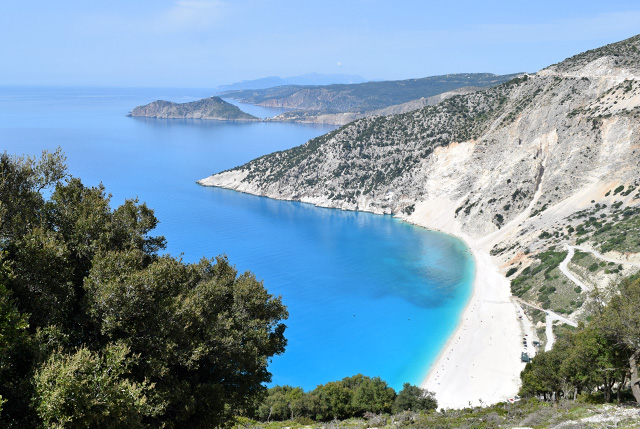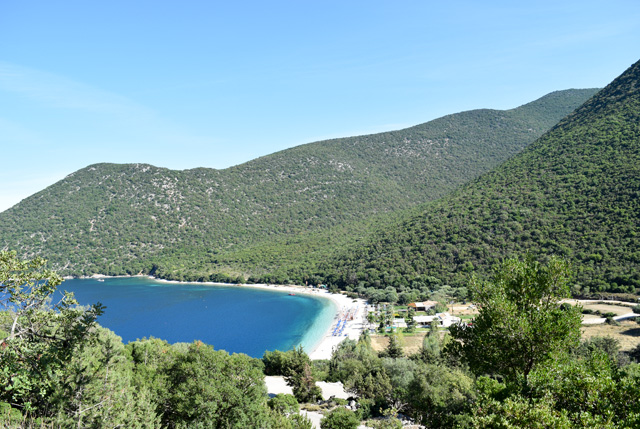KEFALONIA TAXI TRANSFERS
www.kefalonia.taxi
Some of the best places to visit in Kefalonia Island
Myrtos Beach
Multi awarded and renown, Myrtos beach stands at the top of the list of the most beautiful Greek beaches and ranks among the most impressive coasts in the Mediterranean Sea and among the best worldwide, for more than ten consecutive years. Deep turquoise blue waters embraced by white sand leading to dazzling white pebbles, in a long strip of dramatic natural beauty. Framed by tall, steep cliffs, will seduce your vision to the endless horizon. Lying between the feet of two mountains and approached by a winding road, Myrtos offers enchanting views from the very first sight. Stand on the balcony above the beach, breath in the salty air and let your eyes plunge into infinity, coloured in all shades of blue. During sunset, there is no better place than this to relish the mind blowing panorama of the red sky merging into the absolute blue sea. A Blue Flag beach once experienced, never forgotten; no wonder it constituted one of the settings for the Hollywood film Captain Corelli's Mandolin.
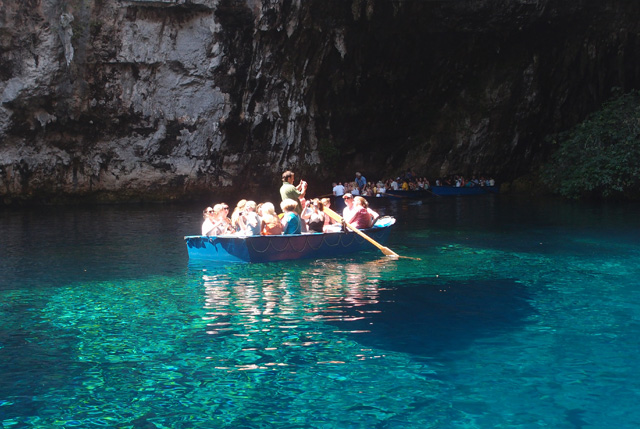
The internal part has collapsed along with a major part of the roof revealing a marvellous view.
Crystal clear waters and unique geophysical sculptures, seen from a boat that guides you through the entire lake.
An unforgettable experience you shouldn’t miss.

The cave's depth is 60m. from the ground level and it is open for the public since 1963.
It's got many stalactites and stalagmites created from the rain. The big hall of the cave is 900m2 and is called the “Sala of Apotheosis”. Because of its perfect acoustics, it is the venue for many concerts and other shows
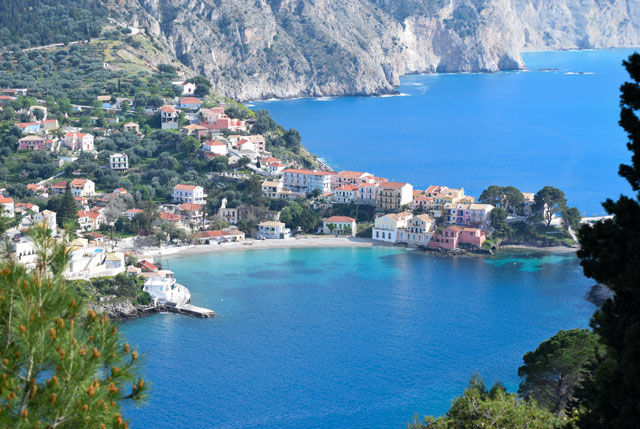
Assos Village
Assos is a small and picturesque fishing village 36 kilometers away from Argostoli.
It is known for its imposing 16th century Venetian fortress. The fortress was built in 1585, when Assos became the capital of the northern part of the island, and it is a typical masterpiece of the Renaissance architecture.
Today, one can still see the ruins of the walls, the house of the Venetian chief-master, military buildings and St Marco's church.
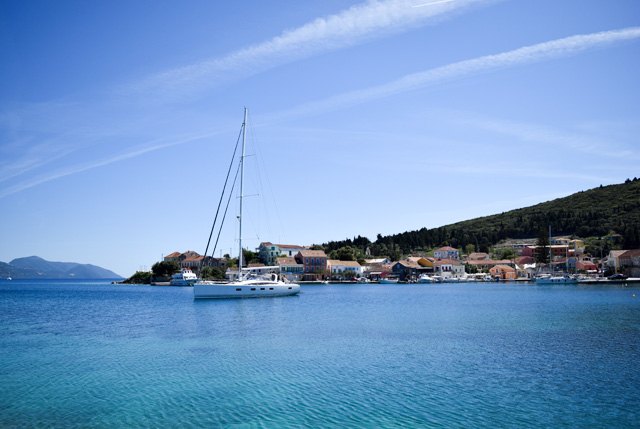
Fiscardo Village
Welcome to Fiscardo, the picturesque and beautiful Greek harbour village on the Northern tip of Kefalonia. Of the approximate 365 villages on this large and diverse island, Fiscardo is unique in that it was left virtually unscathed during the great earthquake of 1953, that ruined most of the islands historic buildings.
Traditional fishing boats moor alongside the more extravagant temporary visitors during the summer. Fiscardo at night takes on an entirely different perspective. The lights, the old buildings, cafe, bars and restaurants all combine to provide a magical Mediterranean atmosphere..
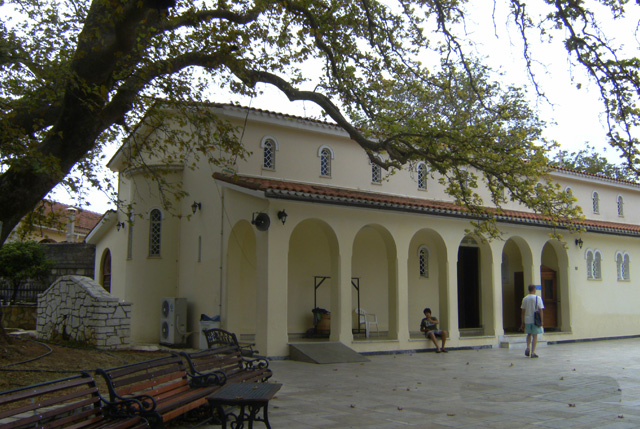
Saint Gerasimos Monastery
It is located on the plateau of Omala and it is the largest religious monument in Kefalonia, having been established in 1560 by St Gerasimos, the patron saint of the island. He was named Saint Gerasimos the New hermit to be distinguished from St Gerasimos the Jordanian. On October 20, 1582, the 2nd exhumation of the saint’s holy relic took place, which thenceforth remains incorruptible and fragrant to be venerated, sanctify and provide a miraculous cure to the believers. The saint’s body is dressed in burial vestments and it is exposed for veneration in a glazed reliquary which is incorporated in a bigger, silver, artful shrine, placed on top of the saint’s grave. The Orthodox Church commemorates the Saint in two dates, on October 20th and August 16th; in both cases, a great feast with pilgrims from across the country takes place at the monastery. You can also access his hermitage, as the entrance of his cave is inside the old church. On the premises of the monastery three large plane trees which the Saint planted himself are still standing; according to tradition, he opened with his hands three wells and 37 smaller ones, for the benefit of the dry land and constructed two threshing floors where he worked in order to get the necessaries for the monastery. For Kefalonians St Gerasimos is just their “Saint” and that’s why Gerasimos is the most common name on the island.
Antisamos Beach
Antisamos is a beach located near the town of Sami. It's a blue flag beach where many scenes of the film "Captain Corelli's mandolin" where shot.
The ever emerald blue waters, the small white pebbles, the amazing view, the trees that reach all the way to the water are only few of its attractions. Wild scenery and a landscape that will blow your mind. Antisamos beach is a fully organised beach with restaurants, water sports and sun beds.
You can also get there from various walking trails throughout the local mountains, all of them offering an endless shade that seems to come out from a fairy tale.
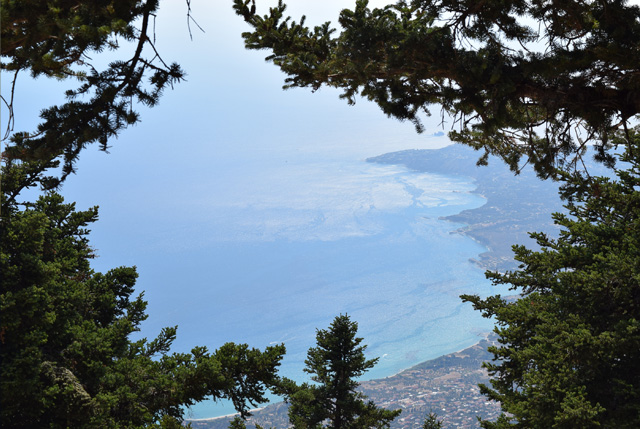
Mount Aenos
Words cannot describe how awesome this majestic mountain is! Mount Aenos is an exceptional natural preserve boasting a forest of the unique black firs of Kefalonia (abies cephalonica). Aenos became widely known as the Monte Negro of Greece due to the dark color of the trees that seemed black when seen from far away.
This beautiful National Park hosts a great variety of flora species and a rich fauna including reptiles and birds, such as the hawk, the woodpecker and the blackbird. The most important mammal found here, but unfortunately close to extinction, is the famous Aenos wild horse, which belong to the Pindos breed and is small and very strong. Become a part of nature's magic.

Argostoli
Argostoli is situated at the southern part of the island and its the capital of Cephalonia since 1797. It is built amphitheatrically at the heart of the deep golf of Koutavos and it has a well organised port. It is the biggest town of the island with rich trade activity, a town that looks to the sea.
The architecture is influenced by all the Ionian elements where the red roofs and wide terraces predominate. Its town planning is modern with large streets and many roads for pedestrians. You can visit the Archeological Museum, the Folk Museum, enjoy walking or shopping at the pedestrian road of Lithostroto or by the waterfront. Plenty of cafés and restaurants can be found around the central square of the town, operating from morning till late.
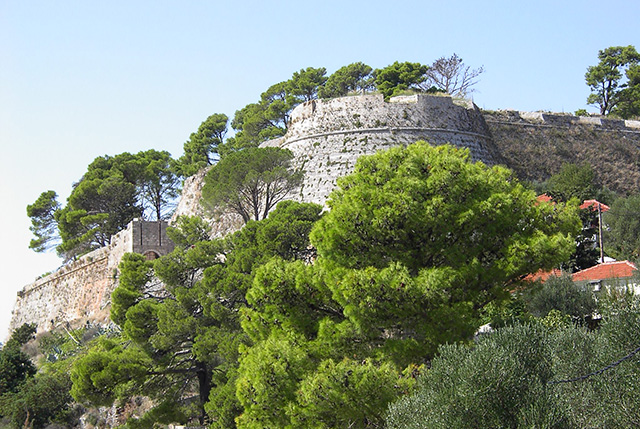 Fortress of Agios Georgios
Fortress of Agios Georgios
The Fortress of Agios Georgios is located at the village Peratata on a 300 m altitude and was probably constructed during the 12th century AD by Byzantine Emperors. It’s about 16.000 m2 and its surrounding walls are approximately 600 m long. Inside the walls there were public and private buildings, churches, food and ammunition warehouses, barracks, hospitals, prisons and water tanks.
Visitors will also see the remnants of the catholic church of Agios Nikolaos and a tunnel that led from the castle to the lagoon of Koutavos and it was used in case of emergency exit. This castle was actually the capital of the island till 1757, when Argostoli became the new capital, but it was heavily damaged during the earthquakes of 1636, 1637 and 1953.
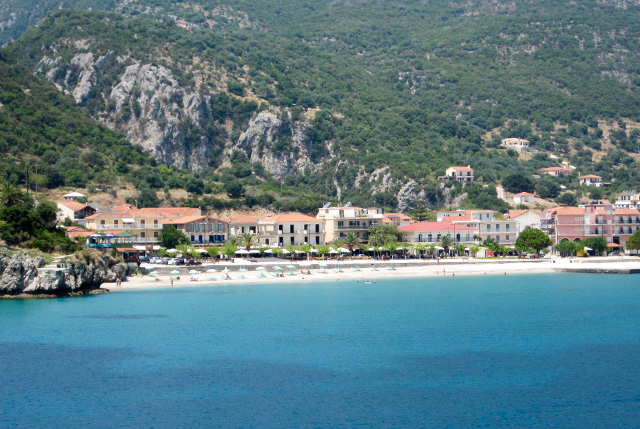
Poros Village
Poros is the biggest district of new Elios – Pronnoi municipality. Is a beautiful, picturesque village, surrounded by the villages Tzanata, Asprogerakas, Kabitsata and Riza. It has a population of 1500 inhabitants.
Its port is a significant link between Kefalonia and continental Greece. It was rebuilt after the earthquake of 1953, after the few fishermen’s houses were destroyed , it is harmonically constructed at the foot of the mountains Pahi and Atros.
The seafront forms part of a vast, indented coastline 2Km long. It is filled with sandy beaches and leeward prots.

Beside of the beautiful scenery and the long sandy fully organized beach, here you can also find everything you need from a variety of banks, public services, supermarkets,caffe's, bars, restaurants, pharmacies and many more.
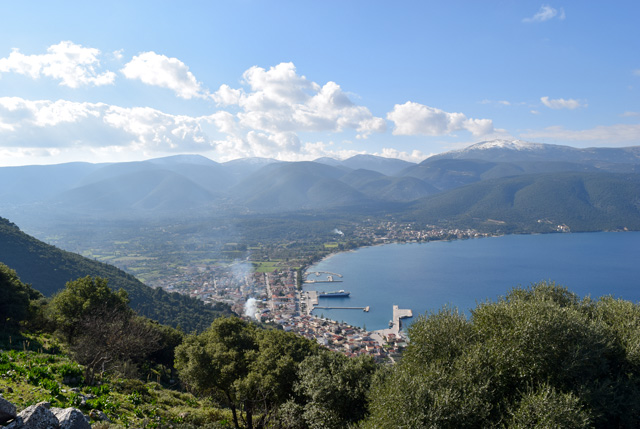 Sami Village
Sami Village
If you visit Sami Village you can find, all sort of stores – food markets, gift shops, boutiques- and many nice restaurants over the waterfront. Health center, doctors, drugstore and dentist are nearby. Regarding sightseeing the area offers two hills which are overlooking the port. Paliokastro – Acropolis the old fortress where located Sami town in the ancient times and Agii Fanentes with ruins from Roman Houses. In one km distance is Dichalia village, known from the film set of Captain Corelli’s Mandolin, since they had established “ Pelagias” village there.
If you visit the area, do not expect to see any leftovers for the sceneries, since according to the story everything lost by the earthquake. From the same road, you can walk to the Agrilia Monastery dedicated to Virgin Mary for exceptional view over the Ithaki Island and Antisamos bay.
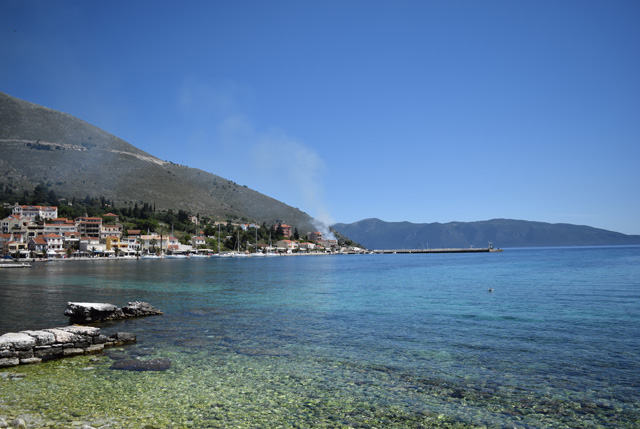
Agia Efimia
Agia Efimia is one of the most traditional and picturesque villages in Kefalonia. It is considered one of the most attractive ports opposite Ithaca.
In the summertime many sailing boats gather here to find supplies and a good rest from the more frequented places of the Ionian. Agia Efimia consists of a collection of tranquil bays with beautiful pebble beaches. Tourism is well organized in Agia Efimia, and the visitors may get all the services needed for a fine holiday.

Petani Beach
Petani beach is one of the most famous beaches in the area of Paliki as well as in the whole island. It can be found in the western part of the island, in the peninsula of Paliki.
Petani Beach consists of white fine pebbles and crystal clear turquoise waters.
The beach is excellently organized with sun beds and umbrellas. There is also a canteen, tavernas and a beach bar.
The beach has also been awarded with the Blue Flag. From here you may enjoy the most beautiful sunset on the island.

